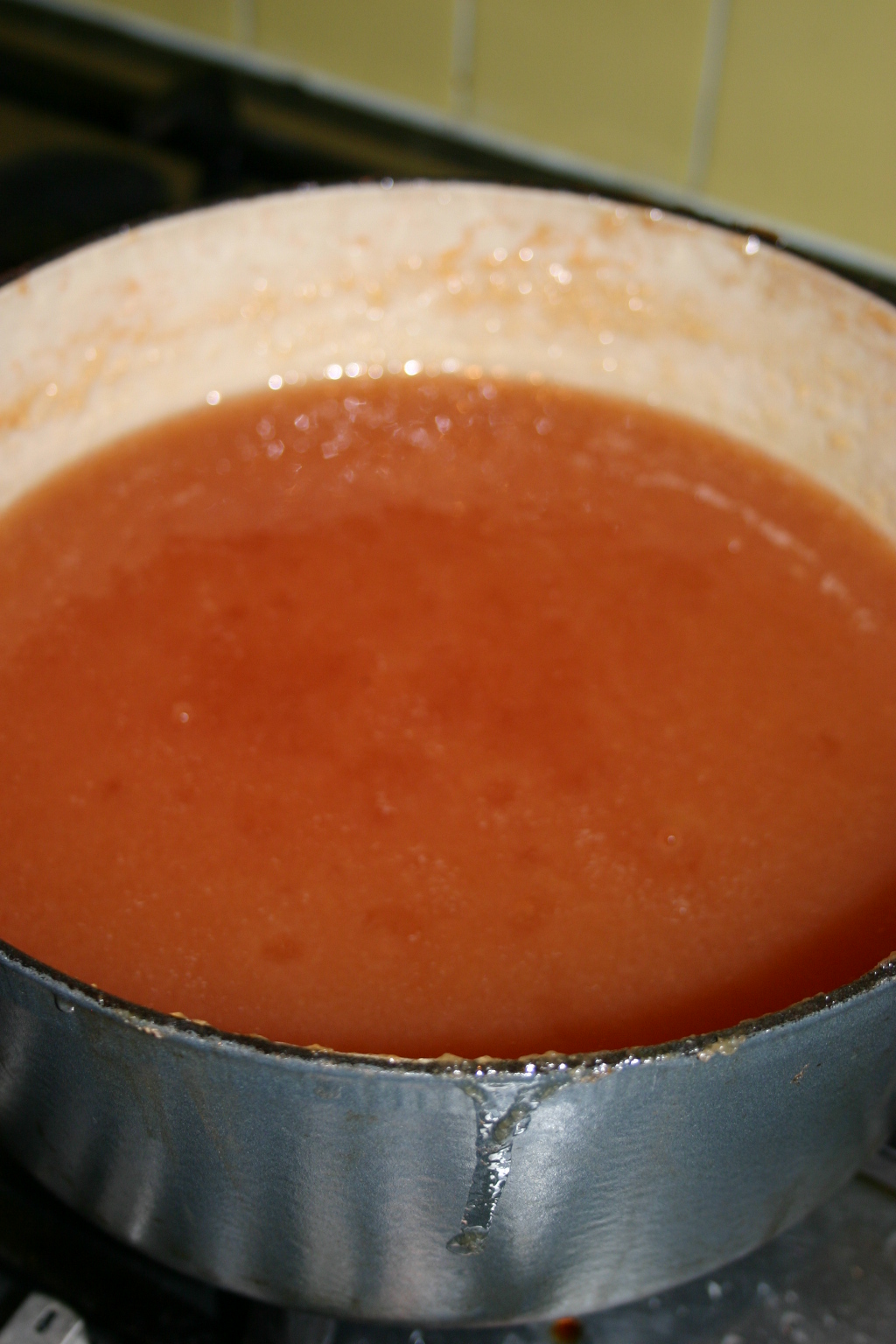
Last post I told you all about the overlooked fruit the medlar (or openarse). It’s a tricky one as it can’t just be picked and eaten like most dessert fruits. The way to get the most of any medlars you do get your hands on is to make a jelly, a beautiful deep vermillion preserve which makes an excellent accompaniment to game, roast or cured meats and cheese.
I thought it would also be a good opportunity to go through the process of making a jelly preserve; something I have been threatening to do for a while. This recipe works well with the close relations of the medlar: the quince and the crab apple.
If you like the blogs and podcast I produce, please consider treating me to a virtual coffee or pint, or even a £3 monthly subscription: follow this link for more information.
Choosing the fruit:
There is a bit of disagreement as to how ripe your medlars should be; some say only unripe medlars should be used, others that ¼ to ½ of them should be bletted (soft and brown). I have only ever used unripe ones – these produce a clear, bright jelly with an astringency comparable to strong tea. Next time, I’ll be patient and wait for a good proportion of them to blet.
Medlars are high in pectin, a chemical glue that sticks plant cells together. As fruit ripens, the pectin is broken down by enzymes making the fruit soft. When making a jelly, one needs to release the pectin by boiling the fruit until pulpy so that it can set the jelly. If using a lot of ripe fruit, I would suggest adding some crab apples or tart eating apples such as Cox’s orange pippins or russets. Alternatively, a proportion of the sugar can be replaced with jam sugar, ensuring a decent set.
Quince and crab apples do not have this problem and you should be okay.
It’s worth mentioning that if you only have a few medlars, quinces or crab apples, you can supplement with some regular apples and the resulting jelly will be still be great. I’ve made quince jelly with 50% apples before and it was delicious!
Ingredients and equipment:
Aside from the fruit, all you need is water, granulated sugar and some optional cider vinegar. I think a little vinegar cuts through the sweetness very well, but you can leave it out if you prefer.
I don’t add herbs and spices to medlar or quince jelly, but crab apple jelly can benefit from some subtle flavouring: things like rosemary and thyme work well as do cinnamon, cloves and black pepper.
Specialist equipment is easy to get hold of and inexpensive: you’ll need a good-sized sheet of muslin or a jelly bag (though a tea towel or pillowcase will also do the job), a sugar thermometer or temperature probe, and some jars with lids.
Method:
Day One
Scrub the fruit(s), chop roughly – there’s no need to peel or core the fruit – and place in a large pot along with any herbs and spices if using. Just cover the fruit with water and bring to a good simmer and add some cider vinegar, around 50 ml per litre of water.
Turn on the heat, cover and simmer until very soft. Very hard fruit can take an hour, though I do give things a helping hand by squishing the fruit against the side of the pan with a wooden spoon.
When the fruit is ready, scald your muslin or jelly bag iwith hot water. If using a jelly bag, place it on its stand with a bowl beneath it, if using muslin, use it to line a bowl. Carefully, ladle the fruit and cooking liquor into the bag/lined bowl – be careful.

The jelly bag can be left to do its thing, but if just using muslin, a little extra work is required: collect up the edges and tie them well with string. You now need to hang this hot haversack of pulp over the bowl to drip overnight. I hook it over a cupboard handle and then in the fridge to keep the fruit flies off. However you do it, make sure things are securely tied – those bags can be pretty weighty.
Day Two
By now, the liquor should have stopped dripping, but give it a squeeze just to see if you can get any more out. Don’t worry of the juice has gone cloudy, this is common with medlars.
Measure the volume of juice and pour into a heavy based stockpot. To this, add your granulated sugar in the ratio of 500g sugar for every 600ml of juice. Turn the heat on and stir until the sugar has fully dissolved. At this point, clip on your sugar thermometer, if using. Turn up the heat so that the syrupy mixture can boil hard. As you wait for this to happen, pop a saucer into your freezer. Skim away any scum that is thrown up.
Let the syrup boil for at least twenty minutes and check the temperature – pectin sets at 105°C. Sometimes jellies don’t always set, so it’s best to double-check with the wrinkle test. Remember that sauce in the fridge? Take it out and drop some of the jelly onto it. Let it cool for a couple of minutes. If it wrinkles when you push it with your finger, all is well and the jelly is ready to be potted into sterilised jars.
(Sterilising jars is easy: place on a baking tray and pop into an oven preheated to 125°C for at least 25 minutes. I usually put mine in as the jelly is coming to a boil. Any rubber seals can be scalded in boiling water closer to the time.)
Use a jug to pour the jelly into jars, don’t overfill here, a gap of one centimetre below the rim is good. Some jars have a helpful maximum fill line on them. Seal with the lids as soon as you can. Be very careful here!
The next day, the jelly should be set, but sometimes it takes a few days, especially if vinegar was used.
The jelly will keep for 6 months unopened, once open keep in the fridge.










